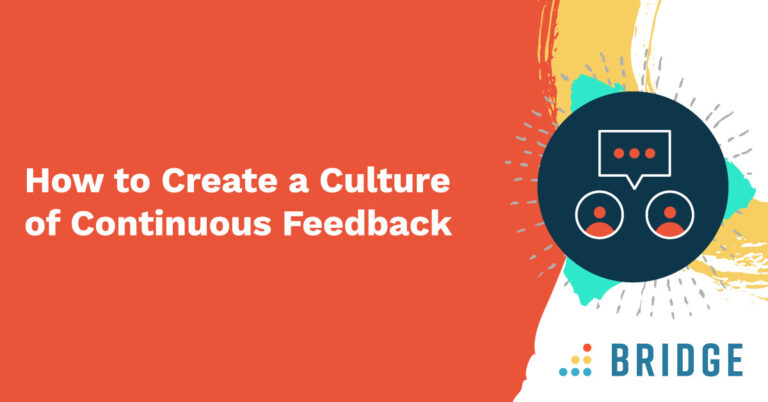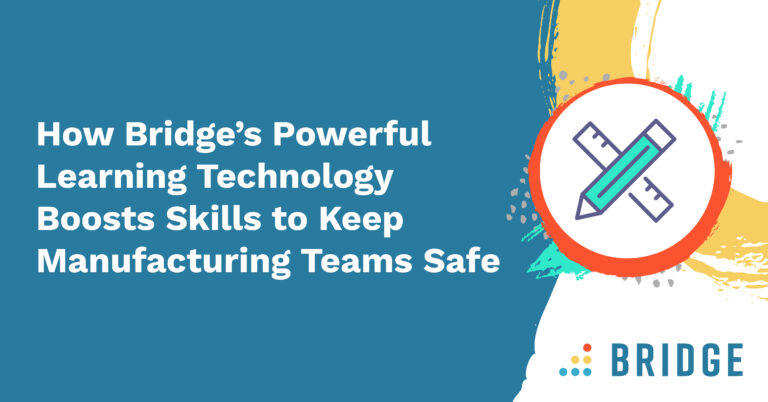Continuous feedback is an essential ingredient of any performance management strategy, and you achieve your best results when you implement the tools and processes to support purposeful forms of communication.
Find out how to strengthen the link between employee feedback and robust performance to empower your employees in their professional development and growth.
The Importance of Continuous Feedback
If you're anything like the 300 HR professionals surveyed in Bridge's Future of Performance Management report, you'll already know the importance of feedback when it comes to assessing employee performance.
However, the report’s findings suggest that the type and frequency of this feedback directly impact its success. HR professionals who say their processes drive strong employee development and performance results are over 1.5 times as likely to encourage and measure the following:
- Structured and formalized performance conversations
- Continuous feedback
Your people want to improve and grow, and one of the most impactful ways you direct this growth is by giving them specific and actionable insights. A culture of continuous feedback is an environment that encourages regular, timely communication and creates processes and structures that make it habitual.
While most people will already be familiar with the practice of delivering and receiving formal feedback as part of performance conversations, encouraging in-the-moment informal feedback can complement your current processes, bringing greater context and clarity. Creating a culture of feedback feeds the cycle of growth, making goals more actionable and leading to stronger performance.
MORE ABOUT FEEDBACK | ‘Continuous Feedback: The Key to the Best Performance Reviews’
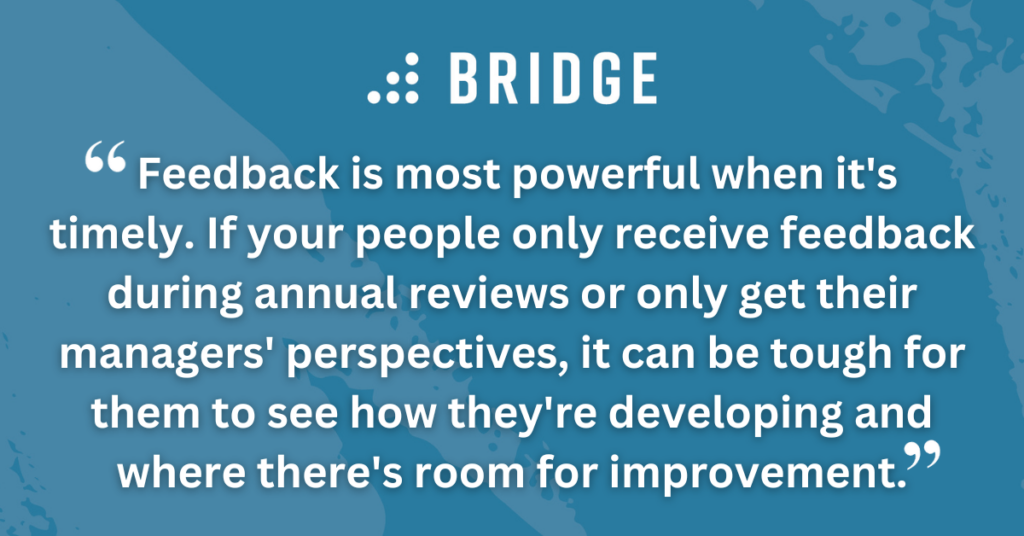
5 Ways to Encourage Continuous Feedback
Here are some tips for encouraging open and direct feedback.
1) Make Giving and Receiving Feedback a Habit
Feedback is most powerful when it's timely. If your people only receive feedback during annual reviews or only get their managers' perspectives, it can be tough for them to see how they're developing and where there's room for improvement.
Enabling opportunities for frequent and honest conversations with peers and managers is essential. This way, feedback can be exchanged immediately at relevant moments on the job or during scheduled conversations, such as one-on-ones or weekly check-ins.
Tracking conversations with shared agendas can create a feedback loop that holds managers and employees accountable and makes outcomes measurable.
FIND OUT MORE | ‘9 Ways to Maximize the Effectiveness of Your 1:1s’
2) Provide Training and Practice Opportunities
Giving and receiving feedback is a skill that takes time to perfect. You can support employees in developing these skills by delivering training programs to offer guidance and best practices. Learning and development programs should also include group training and role-playing activities, encouraging people to practice and learn from each other.
When you use a platform with a user-friendly interface and an easy-to-search course library like Bridge LMS, you make it easy to find and enroll in training, and ensure you can clearly reference templates and videos when they need a reminder.
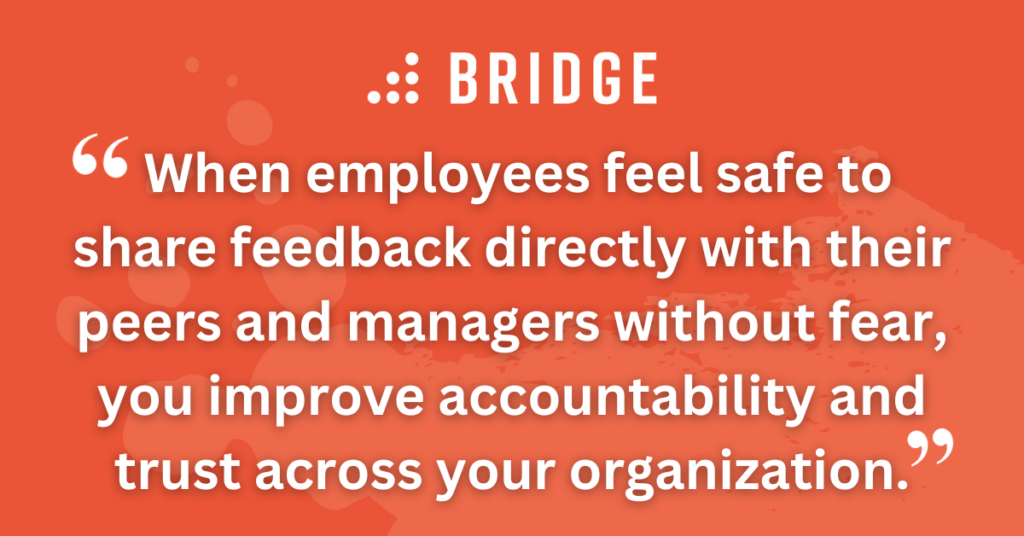
3) Build Psychological Safety
Whether celebratory or constructive, feedback should always be used to help others. You want your people to know that sharing improvement-focused opinions with others is always welcome. When employees feel safe to share feedback directly with their peers and managers without fear, you improve accountability and trust across your organization.
It's important to support an environment where people can express differences of opinion. Think about it like this—if everyone in your organization thinks the same way, they're unlikely to innovate and improve. Your people should all feel safe to ask questions, share their opinions, and come up with the best solution.
ADDITIONAL INSIGHTS | ‘The Importance of Workplace Coaching and How to Do It Well: Q&A With an Executive Coach’
4) Set Expectations for Giving Feedback
Documenting your organization's processes and best practices, such as with a competency framework, skills matrix, or company values statement, shows your people what's expected and what performance excellence looks like. This provides a structured framework for assessing skills and behaviors.
You should additionally encourage teams and departments to outline their processes so they can be easily referenced and shared. This can help your people deliver timely feedback, pointing to specific examples and offering solutions.
LEARN MORE | ‘Skills Mapping 101: How to Visualize Employee Capabilities’
5) Be Intentional When Sharing Skills Feedback
Giving effective feedback is about more than just frequency. You make feedback more impactful and measurable by making it part of your learning and development paths or choosing feedback participants based on shared skills. This ensures your people can gather insights from those best placed to support their development.
Using a skills management solution immediately makes these insights actionable. A platform like Bridge can be used to create personalized development plans, recommend learning, and assign relevant goals.
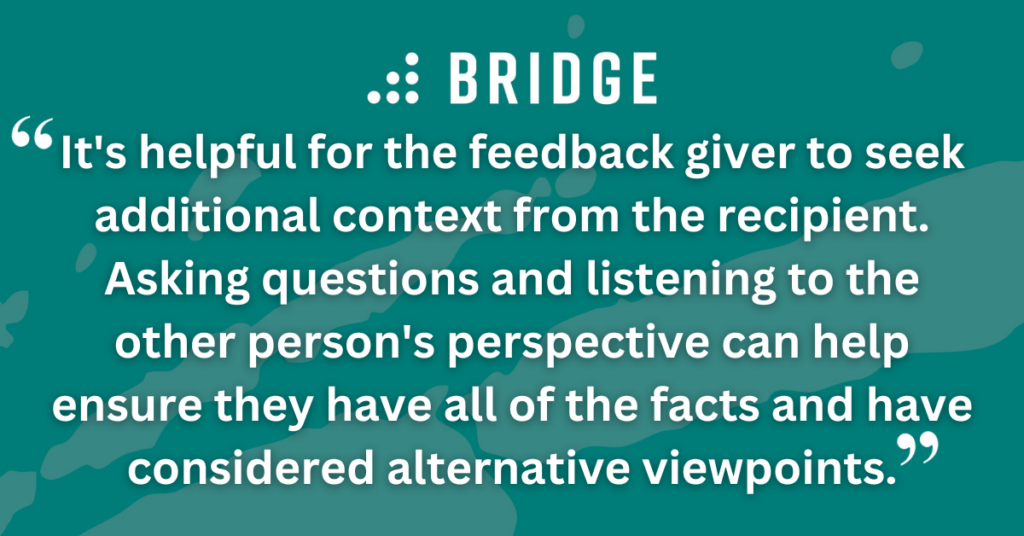
A Framework for Delivering Feedback
A step-by-step framework can help your people practice and perfect in-the-moment feedback. Your framework might look something like this:
1) Give Context
The feedback giver should open the conversation by sharing their intention and letting the other party know what they want to achieve from the conversation. They should give context to the discussion by using specific examples and avoiding terms such as "always" and "never."
When starting the conversation, being mindful of the solution creates a safe space where both parties can work together to agree on the outcome.
2) Provide Feedback
Feedback must be based on observable behavior. The feedback giver should also be mindful to keep the focus to themselves and use statements such as "I'm hearing" or "I'm sensing." This way, the focus of the conversation remains factual.
3) Be Curious
After providing feedback, it's helpful for the feedback giver to seek additional context from the recipient. Asking questions and listening to the other person's perspective can help ensure they have all of the facts and have considered alternative viewpoints.
The questions asked during these conversations are important. For instance, asking "what?" instead of "why?" can encourage collaboration and lead to deeper discussion that helps to see the other person's perspective.
4) Describe the Impact
The feedback giver needs to describe the impact of the behavior on the business or an individual.
5) Establish the Next Steps
Both parties should leave the conversation clear about what to do next. If there are any agreed-upon actions, the recipient should have the chance to come up with their own solution and set a deadline to create a greater sense of ownership.
UNLOCK IN-DEPTH FEEDBACK INSIGHTS | ‘Feel the Benefits of Continuous Feedback With These 4 Approaches’
Create a Culture of Feedback With Bridge
Build and sustain an organizational commitment to feedback with Bridge. Bridge’s platform gives you the tools to facilitate employee performance through one-on-ones, skills feedback, and performance conversations.
